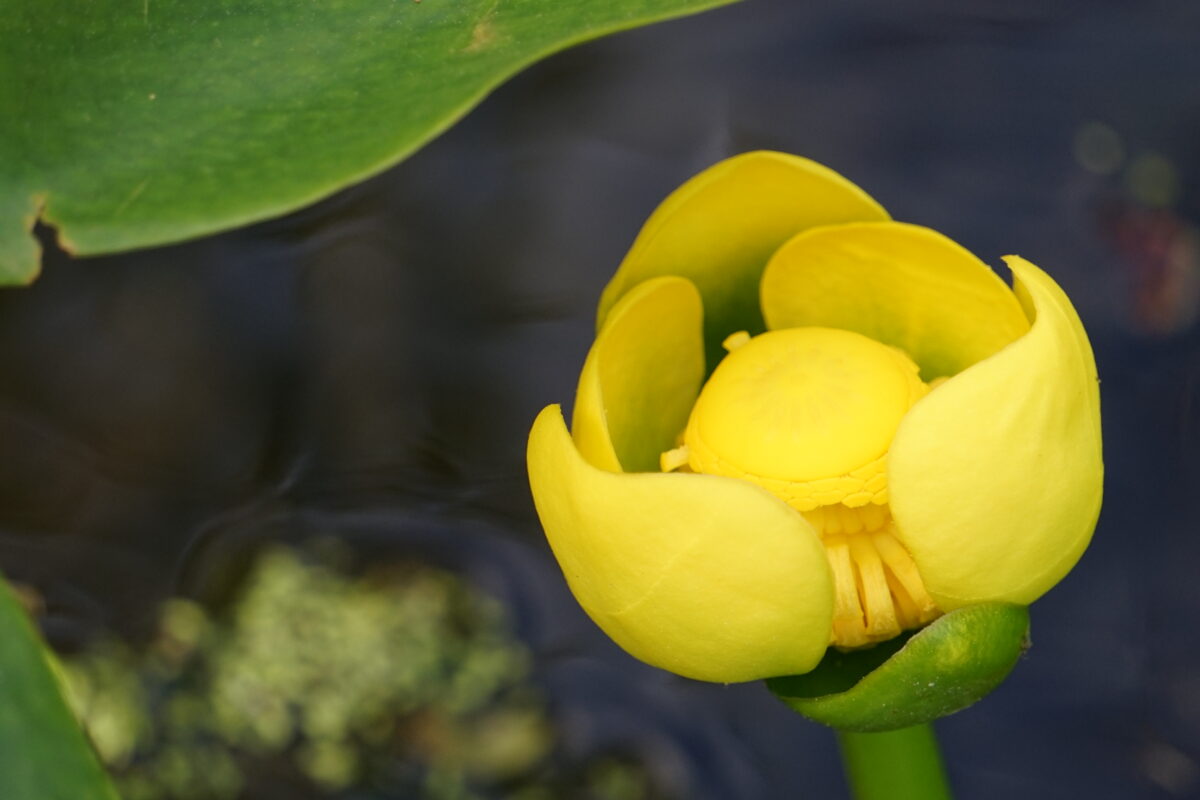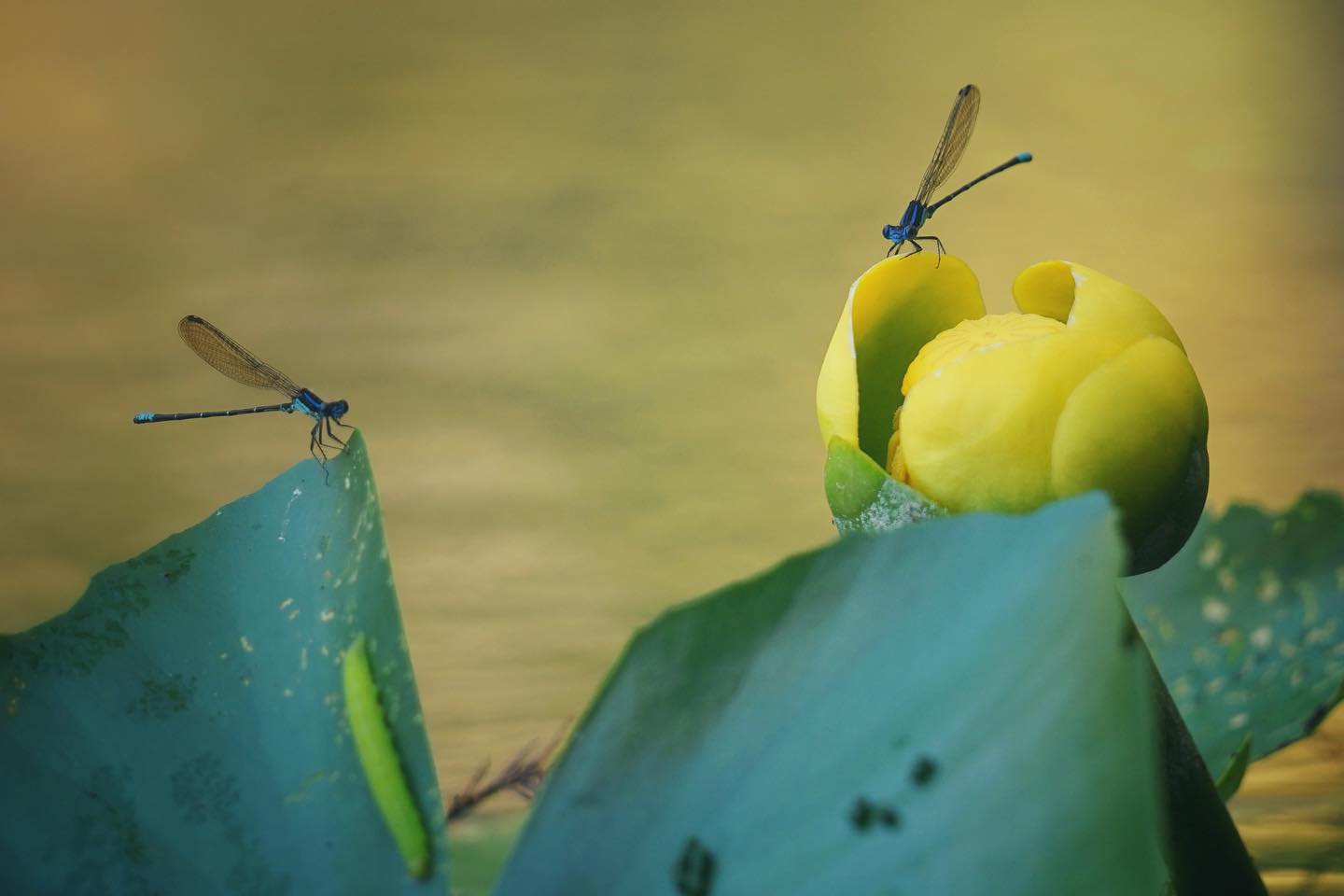Spatterdock
Pictured above: Spatterdock (Nuphar advena) by Emily Bell. Click on terms for botanical definitions. View post as a PDF.
Imagine yourself drifting down one of Florida’s crystal clear spring fed rivers. Here, you are likely to see many wonderful aquatic wildflowers mingling near the shoreline including the vibrant red Cardinalflower (Lobelia cardinalis), bright white Spring-run spiderlily (Hymenocallis rotata), and delightful yellow Spatterdock (Nuphar advena). Found in many slow-moving fresh water environments across Florida, Spatterdock is a beautiful emergent aquatic wildflower with numerous benefits to wildlife. Its underwater structure provides cover and habitat for fish, frogs and aquatic invertebrates. The flowers, frequently pollinated by flies and beetles, are also a nectar source for several bee species. Native Americans reportedly used the plant both medicinally and as a food source. Other common names for Spatterdock include yellow pondlily and cowlily.
Spatterdock’s spongy rhizomes are rooted in the muck of shallow waters. From these rhizomes, stout round green stems arise. While few narrow submerged leaves may form, most of the leaves are found floating on or sitting just above the water’s surface. These leaves are large, reaching up to 16 inches across, and often have wavy margins and a deep narrow cut where they attach to the stem, giving them a heart-shaped appearance. The rounded yellow flowers are 1 to 2 inches across. They are cupped by six erect sepals and look only half opened, even when fully in bloom. The three outer sepals are green and the three inner sepals are yellow and petal-like. The actual petals are the numerous thin yellow strands found nestled within the sepals and mixed among the many stamens. There is a prominent yellow lobed stigma in the center.

The genus Nuphar has been through quite the taxonomic adventure! In the past, one species, Nuphar luteum, was recognized for populations native to North and South America, Europe and Asia. However, scientists recognized morphological distinctions that suggested different species were warranted. This was supported by molecular analysis. Today, there are eight separate species recognized in North America, of which Nuphar advena is the only one currently considered native to Florida. Furthermore, the Atlas of Florida Plants recognizes three subspecies.
Family: Nymphaeaceae (Waterlily family)
Native range: Throughout Florida
To see where natural populations of Spatterdock have been vouchered, visit florida.plantatlas.usf.edu
Hardiness: Zone 8A–10B
Lifespan: Perennial
Soil: Saturated to inundated mucky soils
Exposure: Full sun to part shade
Growth habit: Rooted emergent aquatic plant
Propagation: Rhizome fragments
Garden tips: Spatterdock makes a wonderful addition to the edges of large ponds or slow-moving water bodies where it will remain within water depths of up to 4 feet. It can also be utilized in small shallow ponds or ditches, but is likely to become dense and completely cover the area.
Plants are occasionally available from nurseries that specialize in Florida native plants. Visit www.PlantRealFlorida.org to find a nursery in your area.

